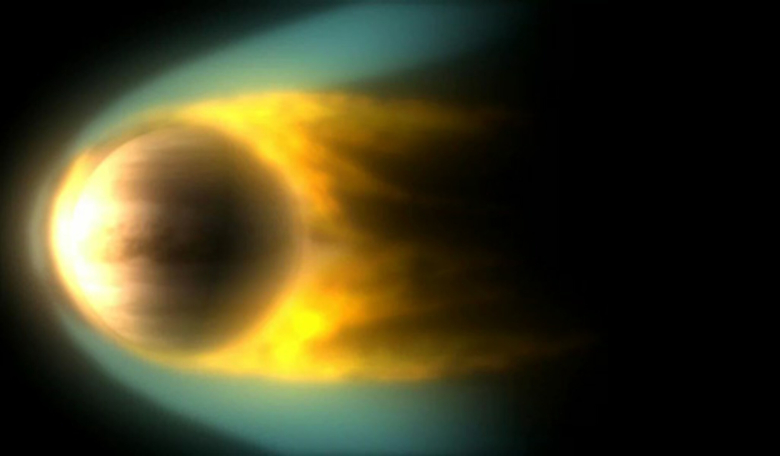Like present-day Earth, early in its history studies suggest that our “twin” planet Venus might also have been a temperate world with enough liquid water to fill oceans. Nowadays however, Venus’ surface is hot enough to melt and the water is long gone, but where did it go? According to a new study, wherever it has gone, it was not lost to space; a finding that implies it could have diffused into surface materials instead.
Venus is in many ways similar to Earth in its structure, but above the surface the resemblance stops there.
It’s thick atmosphere traps heat in a runaway greenhouse effect, making it the hottest planet in our solar system. The few glimpses that scientists have been able to take below the sulphuric-rich clouds has revealed a barren world with volcanoes, deformed mountains and a scorched rocky surface.
As Venus is closer to the sun than Earth and receives far more sunlight, scientists think that if the planet once harboured oceans, the water was lost to space after being broken down into its constituent parts by ultra violet radiation.
But a new finding by PhD student Moa Persson at the Swedish Institute of Space Physics (IRF) and Umeå University, who measured ions (charged particles) in the vicinity of Venus says otherwise.
Using data from IRF’s space instrument ASPERA-4, on board the European Space Agency’s space mission Venus Express, Persson who defended her doctoral thesis last week, found that variations in the solar wind and the solar radiation affect how many ions escape.
On average two protons (a proton is a hydrogen atom stripped of its electron) escape from Venus’s atmosphere for every one oxygen ion O+). Whats more, the number of escaping protons varies over the solar cycle.
“In my thesis I have calculated how much water has escaped from Venus in the past. I have looked at how the ion escape is affected by the solar wind variations today and how the solar wind has changed over time”, says Moa Persson.
Persson says that more protons escape during solar minimum than during solar maximum because many protons return to Venus during solar maximum.
Escape rates for oxygen ions on the other hand were found to increase with an increase in energy present in the upstream solar wind.
This indicates that Venus is efficiently preventing solar wind from stripping its atmosphere of its constituents.
Using this relation between the oxygen ion escape rate and energy available in the upstream solar wind (to help the ions escape), Persson extrapolated the how much atmosphere Venus lost going backwards in time, taking into account how the solar wind evolves over time.
Persson’s results suggest that contrary to earlier studies, only a small part of the historical water content on Venus has been lost to space over the past 4 billion years.
“The surface of Venus today is comparable to hell. It is extremely dry and has a temperature of 460 degrees but historically the surface was more hospitable with a wealth of water that could reach a depth of several hundreds of metres if spread equally over the surface. This water has disappeared from Venus. My thesis shows that only a few decimetres of this water has escaped to space”, she says.
Finding water on our neighbouring planets might seem like an astronomical obsession and it probably is, but for a good reason. Knowing if Venus (and Mars) once vast quantities of water on their surfaces, not only would it help our understanding of planetary formation, but it could also help constrain whether these planets once had conditions suitable for life to take hold.
“I hope further comparisons will be done of the atmospheric losses of Venus, Earth and Mars. This is especially interesting now that signs of life may have been found on Venus”, says Moa Persson.
These findings were presented by Moa Persson as part of her doctoral thesis, which can be viewed in full on the Umeå University website.











